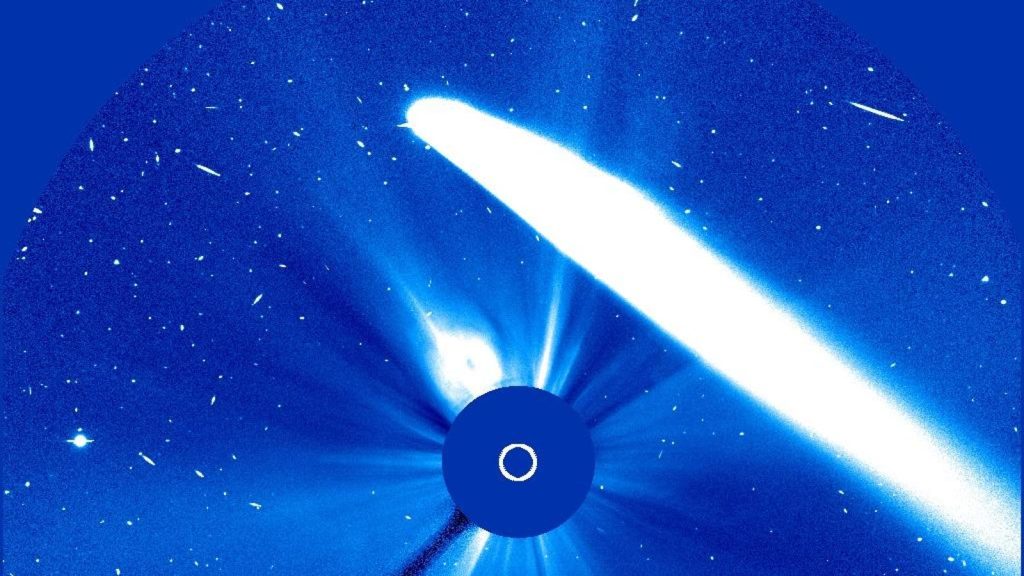NASA’s SOHO Solar Observatory has spotted the ultra-bright tail of a comet in the sun’s glare destined to be a naked-eye object in the next few days.
Captured by the LASCO instrument on NASA’s SOHO Observatory, which orbits Earth, the latest image shows comet C/2023 A3 (Tsuchinshan-ATLAS) — also known as comet A3 — just three days before it’s due to get closest to Earth on Oct. 12.
LASCO is a coronagraph that has a disk to occult the sun’s disk, thereby allowing it to image the corona — the sun’s outer atmosphere — including any objects that come close to it. Typically, that’s planets, but an incredibly bright object is swooping past this week.
NOAA Captures Comet C/2023 A3 (Tsuchinshan-ATLAS)
One of the images shows comet C/2023 A3 (Tsuchinshan-ATLAS) on Oct. 7 appearing in LASCO’s field of view just as a strong X2.1 solar flare (extreme ultraviolet flashes of electromagnetic radiation) and a pair of coronal mass ejections (clouds of charged particles) exploded from the sun.
“The comet will continue to pass from the right to the top left of the sun into Oct. 10 before it moves out of view by Oct. 11,” said NOAA’s Space Weather Prediction Center, which published the image on Oct. 8. “During its transit across the coronagraph imager, it will continue to be a magnificent presence, but could over-saturate imagery due to its tremendous brightness.”
You can see exactly where comet C/2023 A3 (Tsuchinshan-ATLAS) is right now in LASCO’s near-live image that’s constantly updated here.
When To See Comet C/2023 A3 (Tsuchinshan-ATLAS)
The comet is about to become visible to the naked eye to skywatchers in the northern hemisphere. Having survived its perihelion with the sun — the closest it gets on its 80,000 year journey — on Sept. 27, the comet is now approaching its brightest.
It will get closest to Earth on Oct. 12 when it will pass about 44 million miles (71 million km) from Earth, but an evening or two before — so tonight (Oct. 10) and tomorrow night (Oct. 11) could be the best time to observe it, at it brightest, with the naked eye.
How To See Comet C/2023 A3 (Tsuchinshan-ATLAS)
Exactly when the comet and its long tail will appear to be at its brightest is hard to tell because, at its intrinsic brightness, it will be close to the horizon and likely difficult to find in the twilight. As the nights pass, it will rise much higher into the sky, so be set against a darker sky, but will drop off in brightness as it does so. So it’s a balancing act.
The best advice is to get outside at sunset on Thursday, Oct. 10, and look west. Find yourself as low a horizon as possible. Take any pair of binoculars to help you.
Wishing you clear skies and wide eyes.
Read the full article here










